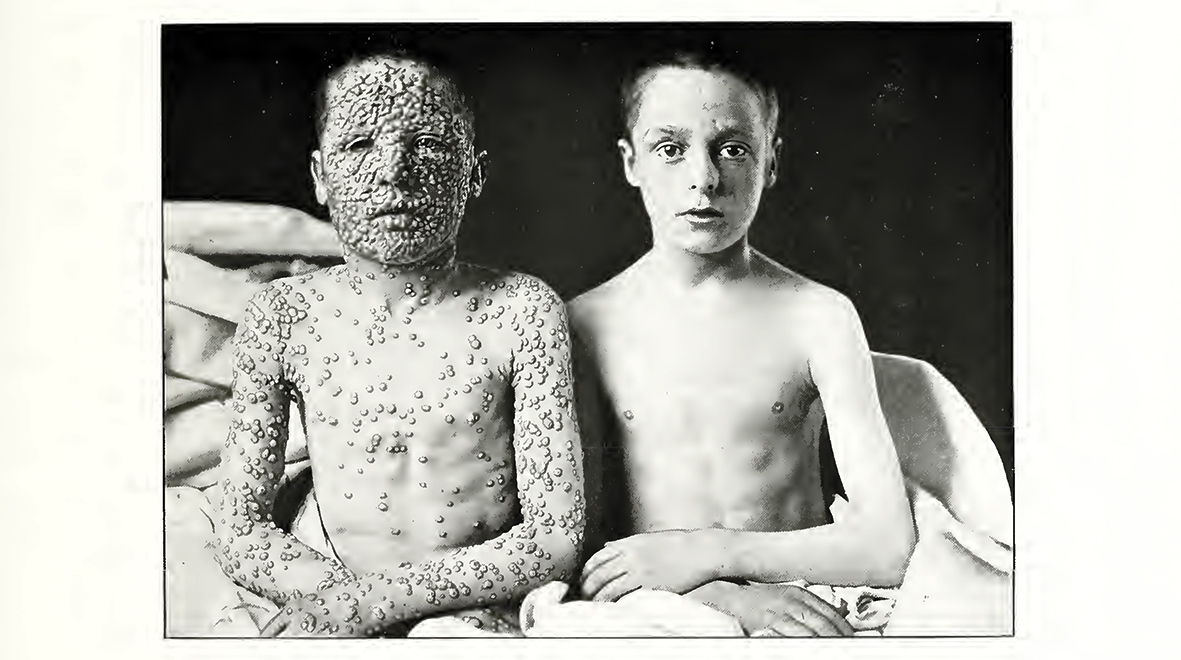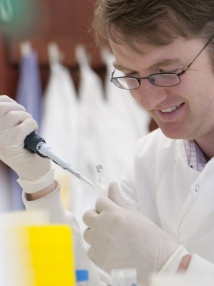
Dr John Tregoning takes us on a tour of vaccination’s greatest successes, explaining how this incredible human achievement works to keep us all safer from disease – as long as we keep vaccinating ourselves and our families.
Nature wants you dead. Not just you, but your children and unborn children and everyone you have ever met.
It wants you to cough and sneeze and poop yourself into an early grave. If it can, it wants you your blood vessels to burst and pustules to explode all over your body. Put simply, Nature is trying to kill you.
And until relatively recently, it was really good at doing this. The average life expectancy of a human in 1900 was 31 years. I should already be dead.
But then science intervened with two critical innovations, clean water and vaccines, and changed everything. Clean water has had the biggest impact, but vaccines are a close second.
Vaccines work by tricking your immune system into thinking it has seen a bug before, so that if you ever see the real thing, it can kill it before it kills you. They are the coolest thing humanity has ever done, that and Magnum ice creams – choc ice on a stick, genius!
Vaccination’s greatest hits
In 1967, there were 10-15 million cases of smallpox a year – this is the equivalent every single person in London. The image above shows two 13-year-old boys in the early 1900s – the one on the right was vaccinated against smallpox, the one on the left wasn’t. The results couldn’t be clearer.
Since 1979, no one has died of smallpox, or even been infected with it. Putting that into context, in the same time 40 year period, more people have been killed by lava lamp explosions, allergic reaction after intercourse with a dog, suffocation after being wedgied, sacrificial goats and whipped cream cans.
Yes, the eradication of smallpox is the biggest success, but the hits just keep coming.
Pretty much everyone wears seatbelts because they save lives. Since 1988, they have saved about 450,000 lives in the USA alone. Vaccines do the same, in the same time period the number of cases of wild poliovirus reduced from an estimated 350,000 cases to 33 reported cases.
But it’s not just polio and smallpox. In 1940, there were more than 60,000 cases and 3,283 deaths from diphtheria in the UK. By 2002, vaccination had almost eliminated it – there were just 2 deaths from diphtheria between 1986 and 2002. Meningitis C has been virtually eradicated, as has invasive pneumococcal disease, Haemophilus influenzae B and rotavirus. And a very recent study showed a 90% reduction in cervical cancer since the introduction of the HPV vaccine – that’s 10 times fewer people getting this type of cancer.
Biological seatbelts
But vaccines only work if you take them. Which is kind of obvious. But the problem is that, as I have just established, vaccines reduce illness, dramatically. This means that the likelihood of people knowing someone who has had a vaccine-preventable illness is very low, which can then reduce the incentive to vaccinate. This is understandable, but wrong and it is particularly wrong because vaccines are a public health measure. By getting yourself or your family vaccinated you are doing a civic duty and protecting others. Because vaccines reduce the transmission of infections – the likelihood that an infected person will infect someone new, they reduce the overall numbers of infections. If you want to see what happens when people stop getting vaccinated, look no further than the reappearance of measles.
Changing the world
So far, so good. But we at Imperial College London want to go further. We want to make new vaccines against diseases that haven’t even emerged yet, preparing for ‘Disease X’ – an unknown pathogen which may cause disease and potentially an epidemic in future. We want to make micro-manufacturing units that can be put in a shipping container and moved to pandemic hotspots. We want to stop HIV and kick Influenza to the curb.
We are working to stabilise vaccines so they don’t go off in the sun and to scale manufacturing processes to make vaccines for all. We want to know when is the best time to vaccinate pregnant mothers to protect their children and the best time to vaccinate children to protect their grandparents. We work across borders with partners around the world to achieve these goals. And I get to work with these brilliant people, doing brilliant things on the coolest thing that mankind has ever done, sometimes whilst eating a Magnum. Happy days.
 Dr John Tregoning (@DrTregoning) is a Senior Lecturer in the Department of Medicine at Imperial. His research focuses on the development of vaccines for respiratory infections, and on understanding why some individuals get more severe disease following respiratory infection.
Dr John Tregoning (@DrTregoning) is a Senior Lecturer in the Department of Medicine at Imperial. His research focuses on the development of vaccines for respiratory infections, and on understanding why some individuals get more severe disease following respiratory infection.
Lead image: CC-BY-NC The University of Leeds Library / Atlas of clinical medicine, surgery, and pathology / Shows two boys, both aged 13 years. The one on the right was vaccinated in infancy, the other was not vaccinated. They were both infected from the same source on the same day. Note that while the one on the left is in the fully pustular stage, the one on the right has had only one or two spots, which have aborted and have already scabbed.
Following the launch of the Faculty of Medicine’s reorganised academic structure on 1 August 2019, this post was recategorised to Department of Infectious Disease.
How many die choking on a Magnum?
More seriously – the picture of the two boys would be ideal for a vaccination publicity campaign.